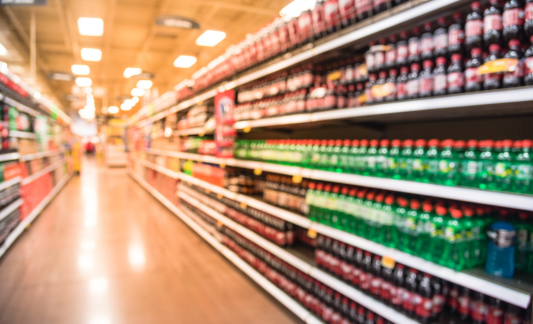Help Isom IGA recover from devasting floods

When a global consumer packaged goods company like Nestlé wants to initiate more sustainable practices, choosing which initiatives to prioritize is a daunting task. Nestlé CEO Mark Schneider spoke with IGA CEO John Ross in episode 11 of the For the Greater Good podcast about what they must consider when launching sustainable initiatives, the business side of sustainability, and Nestlé's goals to be Net Zero by 2050.
Watch the interview below or listen on your favorite podcast platform.
Key Takeaways
On Healthcare:
Schneider spent nearly 20 years in healthcare, which has informed his approach at Nestlé.
"I learned that clearly healthcare can help fix a problem once it occurs, but the best way to stay healthy is not to have problems to begin with," he says. "And the best way to stay healthy over time, in my opinion, is appropriate nutrition."
On The Business of Sustainability:
Building a business case for sustainability is important to the company's initiatives, Schneider says.
"If you don't have that business rationale underlying each and every project, you simply will not have the staying power in more challenging times economically."
At the same time, there is a cost to doing nothing, he adds.
"The cost of doing nothing, along a number of these dimensions, whether it's plastic waste or greenhouse gas emissions, is clearly going up. And if you do something, if you invest in order to lessen your footprint, clearly then that regulatory exposure is going to be lower. So those two things make the business case fundamental."
On Prioritizing Sustainable Initiatives:
Choosing sustainable initiatives to focus on is a complex process.
"It's a humongous challenge to tackle and making that plan happen is a massive undertaking," Schneider explains. "Rather than insisting on a one-size-fits-all across the entire company, you have to take the liberty to break it down into different speed levels, if you will, either by category or by geography.
"That depends on environmental factors. It depends on the kind of footprint that each and every one of these categories has. Greenhouse gas footprint associated with dairy is a heavier one than for coffee. At the same time, many dairy products face a much more competitive environment than coffee, which is doing really well for us.
"And so this is where different categories have to shoulder different burden levels. And I think by making the burden level achievable to the category you're talking to, I think this is one of the ways to really create traction inside the company and make it happen. Overall, in a consolidated basis, of course, we need to meet our targets, but it doesn't mean that everyone has to go at exactly the same pace."
On Plastic:
Plastic packaging is key to reducing food waste and improving food safety, but recycling must be improved, Schneider says.
"How do you preserve the quality of that packaging, and yet at the same time, avoid some of the environmental consequences?" Schneider asks. "We're supporting recycling systems around the world where we operate. We are striving to make our packaging either reusable or recyclable within the next several years. We are aiming for more than 95% recyclable or reusable by the year 2025, and then try to complete the rest in the next few years after."
Want to know more about Nestlé's sustainability efforts? Visit these pages for more:
- Consumers want sustainable options. What food producers, suppliers, and retailers can do now
- How a living income can remake cocoa farming
- Nestlé Sustainability
- Supporting balanced & sustainable diets with products good for you and good for the planet
- Nestlé's climate action and roadmap to achieve net zero by 2050 at the latest
- Nestlé's waste reduction: Reducing packaging and food waste
Previous Story
← How Store Tours Impact D.C. Policy
You May Also Like
These Stories on From the Desk of
Dec 18, 2025 9:32:36 AM |
3 min read
Dec 10, 2025 4:57:50 PM |
1 min read


No Comments Yet
Let us know what you think